There's a reason Machu Picchu is known as one of the New Seven Wonders of the World
- bstclair579
- Jul 17, 2024
- 5 min read
We were not sure that we would be able to visit Machu Picchu since everthing we read and what people told us was that you needed to buy a ticket or reserve a tour months in advance. Fortunately we were able to book a tour a week beforehand. It would have been a bit less expensive to buy a ticket online and do it ourselves, but tickets were sold out and the tour was well worth it. We had an excellent guide and all was very easy to arrange. Our tour also included several sites in the Sacred Valley the day before on the way to Machu Picchu.
We were expecting Machu Picchu to be very crowded with long lines just walking through the site, a sort-of Disneyland-like experience. It was nothing like that on our visit. In the last few years, the park has restricted the number of tickets for each day and instigated some rules to disperse people at the site, and it has worked. It did not feel crowded. Our ticket did not include the circuit that allowed us to visit the central part of the site, but it didn't matter. We were able to see all of the site from above and to take a trail to special part of the site called the Inca bridge, a trail with a bridge along a cliff that enabled the Incas to stop invaders. It was so nice - saw only a few other people on the trail. As a bonus, our guide was able to get us through to see a part of the third circuit that allowed us to see some of the important buildings close-up, including the Temple of the Sun.
Machu Picchu is an Inca citadel built in the 15th century during the reign of the great Inca ruler Pachacutec. It was likely a fortress retreat for him, but seemed to be abandoned by the early 16th century, presumably because of Spanish conquests in other parts of the Inca Empire, or perhaps because of diseases introduced by the Spanish. It remained unknown to the outside world except the nearby inhabitants until 1911, when Yale professor Hiram Bingham discovered it and brought it to international attention.
We spent the night at the Aguas Calientes, the town on the river below the site. We reached Aguas Calientes the prior evening by train, a beautiful ride. From town you reach the site via tourist bus. With our guide, we hiked up to the terraces above the main part of the site (including the hike to the Inca Bridge). We had an early entry time, and as it turned out, we were able to spend nearly four hours there - twice what we thought we would. The ruins and the agricultural terraces are in great shape. It is amazing to see how the Incas fit the stones together so precisely to achieve such incredible structures without the use of mortar (a type of building using cut stones fit tightly together called ashlar). The setting of the site between two peaks is truely spectacular.
The day before visiting Machu Picchu, we visited several other Incan sites in the Sacred Valley as part of the tour. The first stop was at the town of Chinchero. Chinchero is another town well-known for their textiles. We visited a textile cooperative and saw another demonstration of the dying and weaving of alpaca wool (with a very funny presenter). We also saw some very wary guinea pigs there (haven't yet tried this Peruvian delicacy). The most interesting part of Chinchero is the church built upon the ruins of the palace of Inca Tupac Yupanqui. The church, built between 1572 and 1607, felt old with a musty interior and some very old paintings.
Next we visited Moray, an interesting site of concentric terraces thought to be a sort-of agricultural laboratory where the Incas experimented with different crops in the different microclimates of the terraces. The Sacred Valley was an important agricultural region for the Incas since it sat at a lower elevation and thus warmer (with the ability to grow maize which was used, among other things, to make chicha, an alcoholic drink used in ceremonies). After Moray, we went to the Maras Salt Mines where salt has been produced for millenia from a saltwater spring. There are about 3,000 ponds owned by about 600 families, with each pond passed on from generation to generation.
After a delicious buffet lunch at a great restaurant in the major town of Urubamba, we headed to Ollantaytambo, our final stop before boarding the train to Aguas Calientes. Ollantaytambo has some spectacular Incan ruins up the side of the hill next to town. It was the site of a major battle where the Incas defeated the Spanish in 1536, but then retreated the following year to a more remote site. Across the valley is a rock and some Incan storehouses that look like the face of a man carrying a load on his back. The ruins are nice, although it felt a little crowded when we were there.
We also visited a couple Inca sites in Cusco. Among the most important is Sacsayhuaman. It was a major ceremonial center for the most important Inca diety, the Sun God, Inti. It sits on the top of the hill overlooking Cusco (and adjacent to the place where we were camping). It is a large site with a big field in the center where ceremonies take place. The week that we were in Cusco was the time of the largest traditonal Incan festival, partly at the site (Inti Raymi - more on that in the next blog post). Sacsayhuaman has an interesting set of zigzaging walls. The most impressive part of the site are the huge stone blocks that are precisely fit together. No one is quite sure how the Incas brought the stones to the site. Most of the stones of Sacsayhuaman were carried off by the Spaniards to rebuild Cusco as a Spanish city, but the impressive heaviest stones remain.
The most important and opulent Inca temple was Qorikancha in the center of Cusco. Little remains except a few rooms. The beautifully carved stone blocks of the rooms indicate the importance the Inca put on the temple. When the Spanish arrived they found walls covered with sheets of gold and golden statues, which, of course, were melted down and carried off to Spain. Like other Inca ruins, the stone blocks were used to build Cusco, and the Santo Domingo Convent built on top of the site in the 17th century.
Later in the week we visited the Inca ruins near Pisac at the head of the Sacred Valley. The agricultural terraces in the Sacred Valley are truely amazing, and some of the most amazing are near Pisac. On our way from Pisac, we visited another museum about weaving and met some quite charismatic alpacas and llamas.
















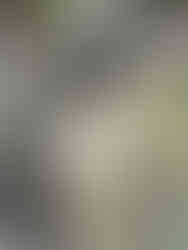






































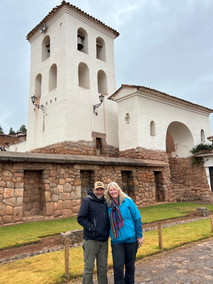
















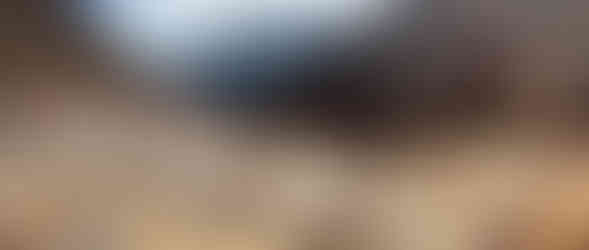














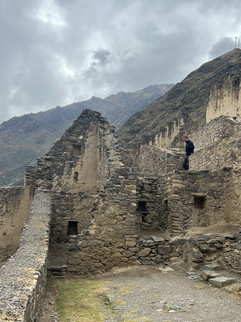



































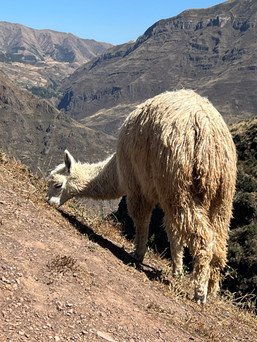



















Cusco blog is great! Brings back some fond memories. Love those pix. Incas really knew their masonry.
Awesome landscape. Thanks for sharing. I would love to have seen those fabulous terraces. And those stones are gigantic. Quite a mystery how they got there.
These photos are EPIC